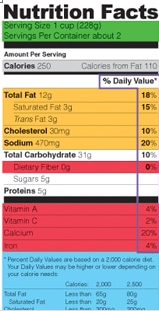Nutrition Facts Labels 101 Serving Size The first item you want to determine from a nutrition facts label is how...

Nutrition Facts Labels 101 Serving Size The first item you want to determine from a nutrition facts label is how...
© 2025 jackomd180. All rights reserved.